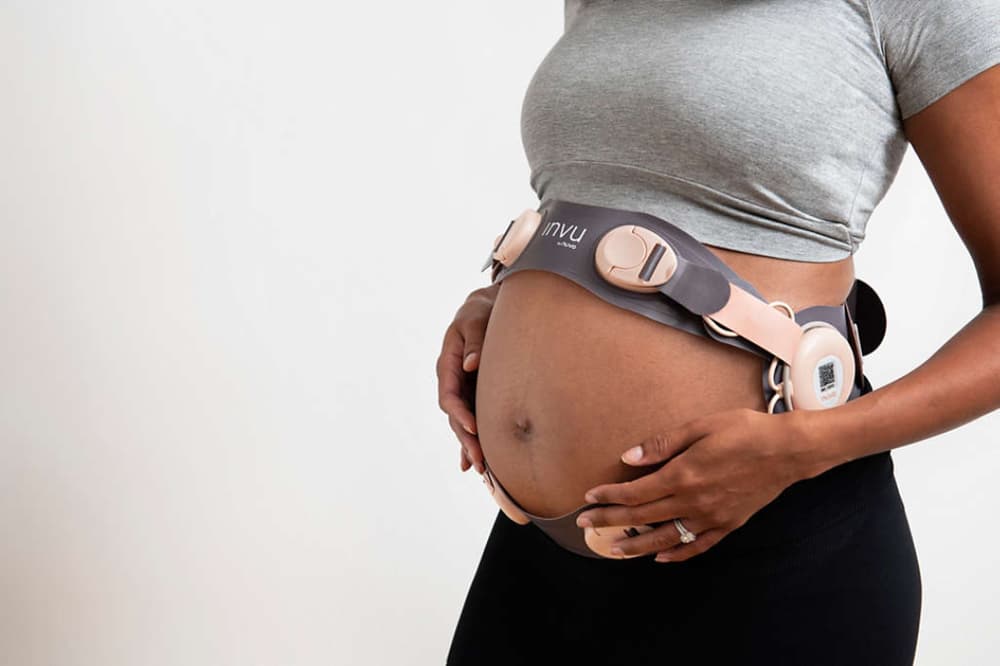Remote fetal monitoring using wearables is transforming prenatal care by allowing expectant mothers to track their baby’s health from home. These devices monitor fetal heart rate, movements, and uterine contractions, transmitting data to healthcare providers in real-time
Remote Fetal Monitoring Using Wearables: Keeping Tabs on Baby’s Health from Home
Written by Sumit Kaushik

Pregnancy is a beautiful but delicate period in a woman's life, typically one of expectation, anticipation, and rightful concern about the infant's health. Women in pregnancy once went to clinics for their regular prenatal visits to monitor fetal health, but frequently even these are inconvenient because of geography, scheduling, or unexpected events such as the present worldwide pandemic.
Due to rapid advancements in health technology, one new treatment is transforming prenatal care: remote fetal monitoring with wearable sensors.
What Is Remote Fetal Monitoring?
Remote fetal monitoring is the use of wearable technology tracking important fetal and maternal indicators in real time outside of a clinical setting. Wearables are meant to track such information as fetal heart rate, movement, uterine activity, and maternal vital signs such as pulse and oxygen saturation.
Secure data are relayed to caregivers in real-time or scheduled viewing without mother in a hospital or clinic.
How do wearable fetal monitors work?
Fetal monitors worn on the body are typically belts, patches, or intelligent clothing that the pregnant woman wraps around her abdomen. Designed with precise sensors—e.g., Doppler ultrasound, electrocardiogram (ECG), or accelerometers—the monitors track fetal heart rhythms, track movement, and track contractions.
It sends the data wirelessly over Bluetooth or Wi-Fi to the connected mobile app or directly to the cloud platform, where the health care professionals can examine the data and provide real-time feedback. The mobile apps are user-friendly where the mothers can view the status of their baby, get an alarm if there is any abnormality, and also talk directly with doctors.
This integration behind the scenes informs patients and clinicians in real-time and engages them during pregnancy.
Benefits of Remote Fetal Monitoring
There are several benefits of use of wearable fetal monitoring:
- Continuous Monitoring: Unlike the typical checkups that provide snapshot data, wearables allow for continuous monitoring, which is more prone to catch complications early.
- Convenience and Comfort: Women have the ability to monitor the health of their baby at any moment from the comfort of their homes, reducing the frequency of how often they have to visit the hospital and the accompanying travel anxiety.
- Access to Increased Care: Telemonitoring provides access to underserved populations or rural groups of women by bridging the distance to quality-specialized care.
- Enhanced Early Intervention: Real-time data sharing enables doctors to pick up on abnormalities like fetal distress, preterm labor, or irregular heart rhythms in the early phases and hence provide timely medical intervention.
- Reduced Anxiety: Access to real-time health data equips expectant women with empowerment, eliminating anxiety and transforming pregnancy into an enjoyable experience.
Real-Life Applications and Future Opportunities
Remote fetal monitoring is now a regular procedure in most healthcare centers, i.e., for high-risk pregnancy where continuous fetal monitoring becomes inevitable. Apart from that, the technology helps telemedicine systems support virtual consulting while reducing face-to-face consultations without compromising the quality of care.
In the coming future, it is also possible that much more advanced fetal monitoring would be possible with more advanced machine learning and AI. Such technology would have the ability to look for long-term patterns, predict potential threats even before symptoms had arisen, and customize pregnancy treatment plans. When combined with other wearable health sensors, it could provide a whole-body maternal and fetal health perspective.
Remote fetal monitoring wearable technology is transforming prenatal care by combining ease with advanced science. It enables mothers to be in touch with the health of their baby day and night, wherever they are in the world, while enabling clinicians to have the right information to make informed decisions.
This technology is not only enhancing medical results—it's transforming the emotional pregnancy experience, making it safer, easier, and more reassuring for women everywhere.